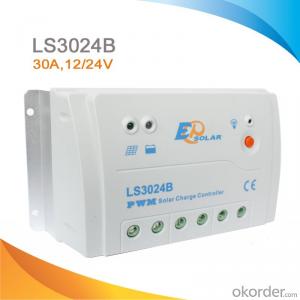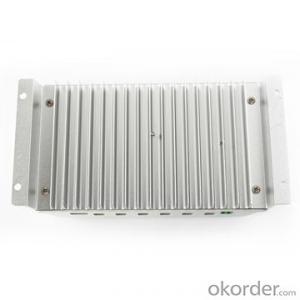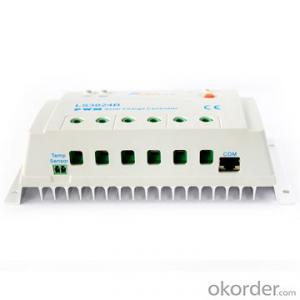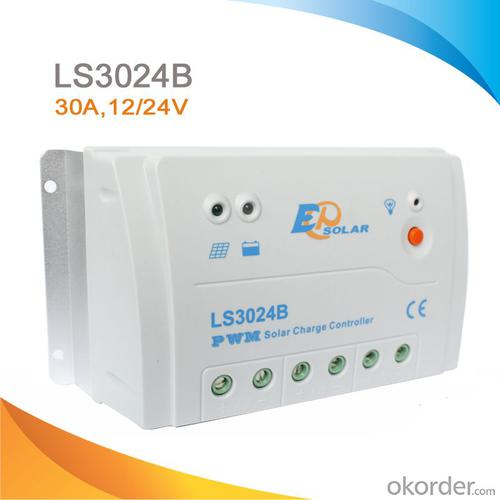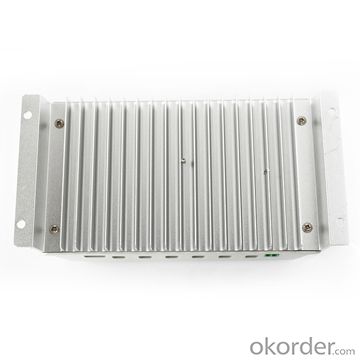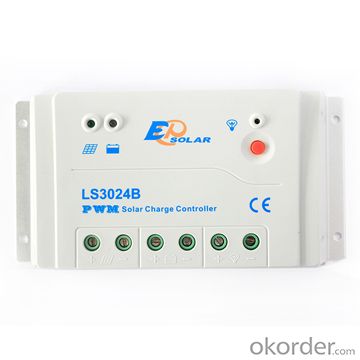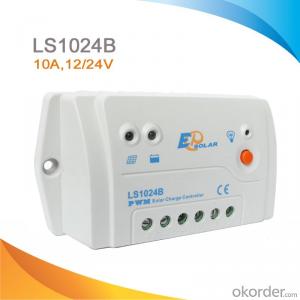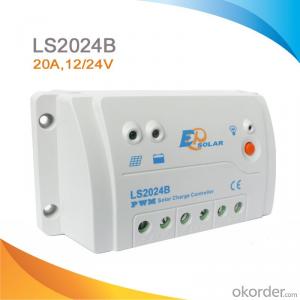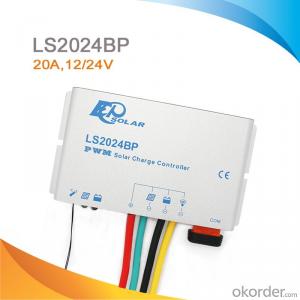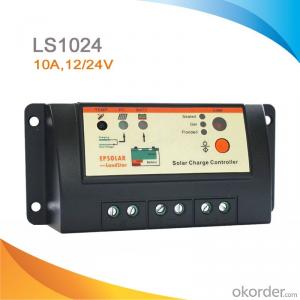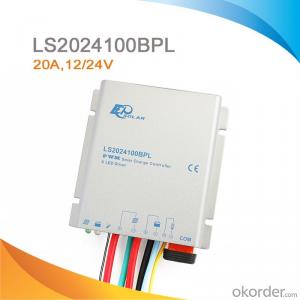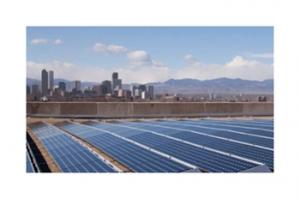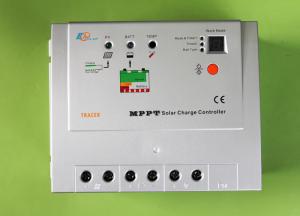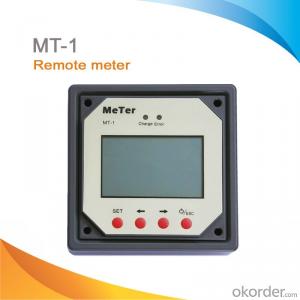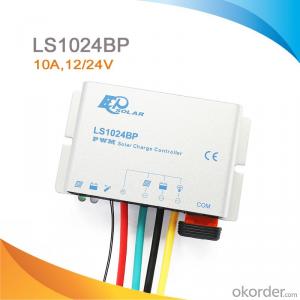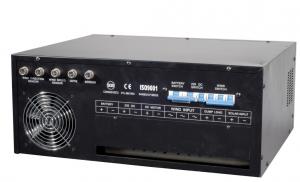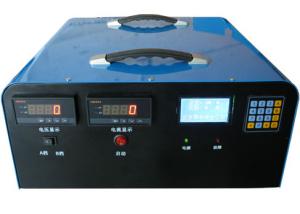Aerl Solar Controllers PWM Solar Charge Controller 30A 12/24V LS3024B
- Loading Port:
- Tianjin
- Payment Terms:
- TT or LC
- Min Order Qty:
- -
- Supply Capability:
- 10000 pc/month
OKorder Service Pledge
OKorder Financial Service
You Might Also Like
Features:
·Three system voltage configuration : 12V, 24V or 12V/24V auto work
·High efficiency PWM charging with temperature compensation
·3 LEDs shows PV charging, battery and load status
·External temperature sensor interface
·RS-485 bus communication
·Open standard Modbus communication protocol
·Software update function
More powerful function via MT50 or PC
·Diversified load control modes : Manual, Light ON/OFF, Light ON+ Timer, Time Control
·Battery type selection: Gel, sealed, flooded and User type
·Real-time monitor
·Programmable parameters
·LVD or SOC load disconnect function
·Energy statistics function
Electronic Protections:
·PV short circuit
·PV reverse polarity
·Battery overcharge
·Battery over discharge
·Battery reverse polarity
·Load short circuit
·Load overload
·Overheating
Specification:
Electrical parameters | LS1024B | LS2024B | LS3024B |
Nominal System Voltage | 12 / 24V auto work | ||
Rated Battery Current | 10A | 20A | 30A |
Maximum battery voltage | 50V | ||
Grounding | Common positive | ||
Self-consumption | 8.4mA(12V),7.8mA(24V) | ||
Temp. compensation | -3mV/℃/2V(25℃ ref) | ||
Equalize charging voltage | Sealed: 14.6V, Flooded: 14.8V, User-defined: 9~17V | ||
Boost charging voltage | Gel: 14.2V, Sealed: 14.4V, Flooded: 14.6V, User-defined: 9~17V | ||
Float charging voltage | Gel /Sealed /Flooded: 13.8V, User-defined: 9~17V | ||
Low voltage reconnect voltage | Gel /Sealed /Flooded: 12.6V, User-defined: 9~17V | ||
Low voltage disconnect voltage | Gel /Sealed /Flooded: 11.1V, User-defined: 9~17V | ||
Working temp. | -35℃~+55℃ | ||
Humidity | ≤95% (NC) | ||
Enclosure | IP30 | ||
Dimension | 138.6x69.3x37mm | 159.6x81.4x47.8mm | 200.6x101.3x57mm |
Terminal | 4mm2 | 10mm2 | 10mm2 |
Net weight | 0.13kg | 0.3kg | 0.5kg |
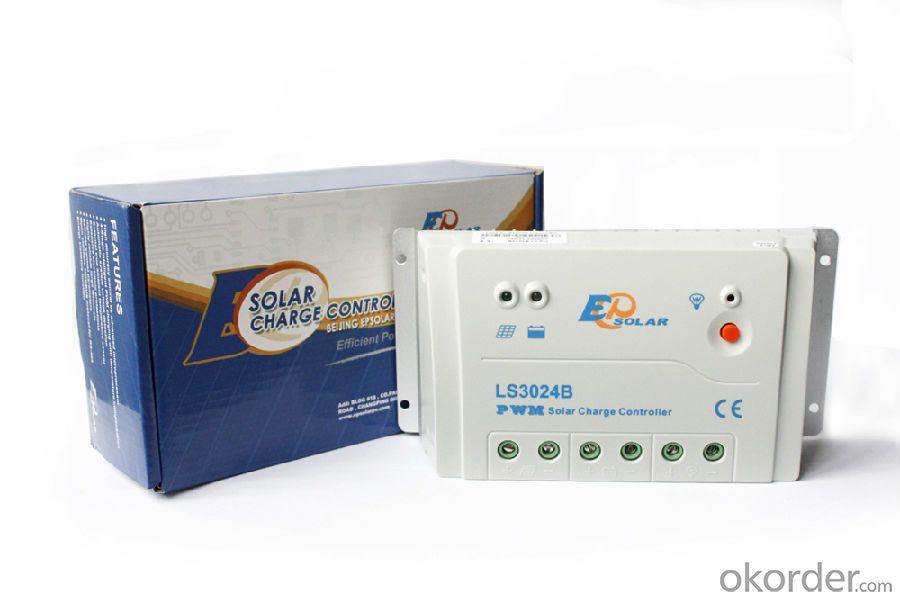
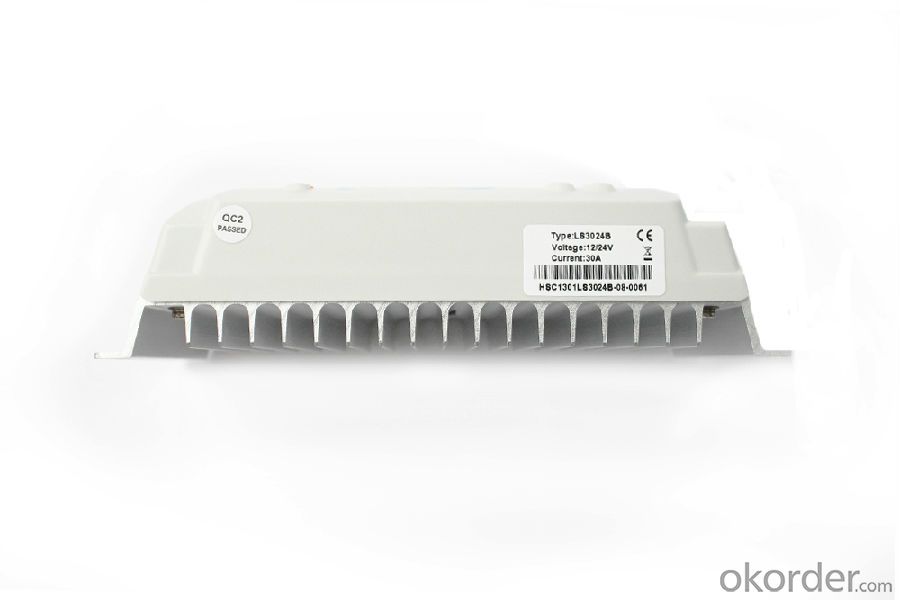
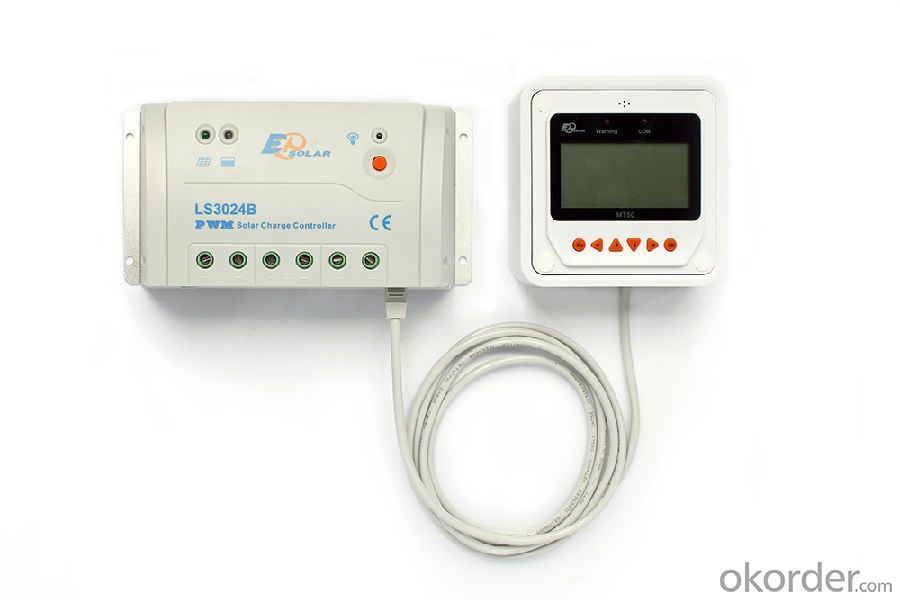
FAQ:
Q1. What is the voltage?
A1. Our 45/60A solar charge controller is 12/24/36/48V auto work.
Q2. What is the difference between MPPT&PWM?
A2. MPPT has higher efficiency, it can track the max power point and won't waste energy.
Q3. What is the efficiency of the MPPT controller?
A3. MPPT>99%, peak conversion efficiency>98%.
Q4. What is the waranty of product?
A4. 12 months.
Q5. What protection does your MPPT controller have?
A5. PV array short circuit, PV reverse polarity, Battery reverse polarity, Over charging, Output short circuit.
- Q: How do PWM solar controllers differ from MPPT controllers?
- PWM (Pulse Width Modulation) solar controllers and MPPT (Maximum Power Point Tracking) controllers differ in their approach to optimizing solar panel output. PWM controllers regulate the output voltage of the solar panels by rapidly switching the panel's current on and off. This is done to maintain a constant battery voltage. However, PWM controllers do not actively track the maximum power output from the panels, which can result in some energy loss, especially in cold weather or when the panels are not operating at their peak efficiency. On the other hand, MPPT controllers use advanced algorithms to continuously track and adjust the solar panel's output to ensure it operates at its maximum power point. By dynamically adjusting the voltage and current, MPPT controllers can extract more energy from the panels, thus maximizing the charging efficiency. This makes MPPT controllers more efficient and suitable for systems with higher voltage panels or in situations with shading or temperature variations. In summary, while PWM controllers regulate the voltage to maintain battery charge, MPPT controllers actively track and optimize the solar panel's maximum power output, resulting in higher charging efficiency and better performance in challenging conditions.
- Q: Can a solar controller be used with a solar electric vehicle charging station?
- Yes, a solar controller can be used with a solar electric vehicle charging station. A solar controller helps regulate the flow of electricity from the solar panels to the charging station, ensuring efficient charging and preventing overcharging.
- Q: Can a solar controller be used in a solar-powered lighting system?
- Yes, a solar controller can be used in a solar-powered lighting system. A solar controller regulates the flow of electricity between the solar panels and the battery, ensuring proper charging and preventing overcharging or discharging. In a solar-powered lighting system, the solar controller helps maximize the efficiency and performance of the system by managing the energy generated by the solar panels and ensuring it is stored and used effectively.
- Q: How does a solar controller prevent overvoltage in the system?
- A solar controller prevents overvoltage in the system by continuously monitoring the voltage levels of the solar panel and battery. When the voltage exceeds a certain threshold, the controller automatically regulates the charging process to prevent excessive charging and potential damage to the batteries. It accomplishes this by reducing the charge current or diverting the excess energy to a secondary load, thereby maintaining a safe and optimal voltage level in the system.
- Q: How does a solar controller handle battery overvoltage disconnect recovery?
- A solar controller typically handles battery overvoltage disconnect recovery by automatically reducing or stopping the charging process when the battery voltage exceeds a predetermined threshold. This helps prevent any further overcharging or damage to the battery. Once the battery voltage drops back to a safe level, the solar controller resumes the charging process to maintain the battery's optimal charge.
- Q: What is the maximum cable size that can be used between the solar panels and the load?
- The maximum cable size that can be used between the solar panels and the load depends on various factors such as the distance between the panels and the load, the current carrying capacity of the cable, and the voltage drop allowed. For shorter distances and lower current requirements, smaller cable sizes may be sufficient. However, for longer distances or higher current loads, larger cable sizes are necessary to minimize voltage drop and ensure efficient power transmission. It is important to consult the manufacturer's specifications and guidelines for the solar panels and the load to determine the maximum cable size that can be used. Additionally, local electrical codes and regulations may also provide guidance on cable sizing requirements.
- Q: Can a solar controller be used in a solar-powered surveillance system?
- Yes, a solar controller can be used in a solar-powered surveillance system. A solar controller is responsible for regulating the flow of power from the solar panels to the battery storage system. In a solar-powered surveillance system, the solar controller ensures that the battery is charged efficiently and protects it from overcharging or discharging, thereby ensuring uninterrupted power supply to the surveillance equipment.
- Q: Can a solar controller be used with solar panels that are connected in series?
- Yes, a solar controller can be used with solar panels that are connected in series. In fact, a solar controller is often recommended when using solar panels connected in series to regulate the voltage and prevent overcharging of the batteries. The solar controller acts as a middleman between the panels and the batteries, ensuring that the batteries receive the optimal charge and preventing any damage that may occur due to excessive voltage. By monitoring the voltage and current from the solar panels, the solar controller can adjust the charging parameters to maximize the efficiency and lifespan of the batteries. Therefore, using a solar controller is highly recommended when using solar panels connected in series to ensure the proper functioning and longevity of the entire solar power system.
- Q: Can a solar controller be used with a solar-powered outdoor entertainment system?
- Yes, a solar controller can be used with a solar-powered outdoor entertainment system. A solar controller helps regulate the charging and discharging of the batteries connected to the solar panels, ensuring efficient use of solar energy. It can be integrated into a solar-powered outdoor entertainment system to manage the power supply and prevent damage to the batteries, thus enhancing the overall performance and longevity of the system.
- Q: What is the maximum charging current that a solar controller can handle?
- The specific model and specifications of a solar controller determine its maximum charging current capacity. Solar controllers are generally designed to handle various charging currents based on the size and capacity of the solar system. Manufacturers usually mention the maximum charging current in the product specifications or user manual. For smaller controllers used in smaller solar systems, it can range from a few amperes, while larger controllers used in bigger solar installations can handle several hundred amperes. When selecting a solar controller, it is crucial to consider the maximum charging current to ensure that it can manage the current generated by the solar panels and meet the battery system's charging requirements. Going beyond the maximum charging current limit of a solar controller may cause damage to the controller or the connected battery system. Therefore, it is advisable to carefully examine the product specifications and seek guidance from the manufacturer or a solar professional to determine the appropriate solar controller for a specific solar system.
Send your message to us
Aerl Solar Controllers PWM Solar Charge Controller 30A 12/24V LS3024B
- Loading Port:
- Tianjin
- Payment Terms:
- TT or LC
- Min Order Qty:
- -
- Supply Capability:
- 10000 pc/month
OKorder Service Pledge
OKorder Financial Service
Similar products
Hot products
Hot Searches
Related keywords
